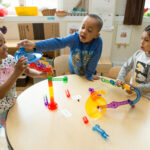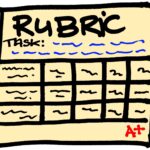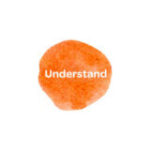Design Thinking in Grade 5
Design thinking is an innovative problem-solving method that has been used by individuals and organizations around the world to come up with creative solutions to complex problems. With its focus on empathy, ideation, prototyping, and testing, design thinking provides a framework for students to develop their critical thinking, creativity, and collaboration skills. Here are some
Read More >>Design Thinking in Grade 4
Design thinking is a problem-solving process that can help students think creatively and develop innovative solutions to real-world challenges. When students engage in design thinking, they are encouraged to think outside the box, work collaboratively, and be persistent in the face of setbacks. As students move up in grade levels, the complexity of their design
Read More >>Design Thinking in Grade 3
Design thinking is an innovative problem-solving approach that can be adapted for any grade level, including third grade. By introducing design thinking, you can help students develop their creativity, collaboration, critical thinking, and communication skills. In this blog post, we’ll explore how you can implement design thinking in your third-grade classroom. Here are some tips
Read More >>Design Thinking in Grade 2
Design thinking is a valuable skill that can benefit students of all ages, including second graders. With its focus on problem-solving and creativity, design thinking can help students develop important critical thinking and collaboration skills that they can use throughout their lives. In this blog post, we will explore how second grade teachers can introduce
Read More >>Design Thinking in Grade 1
Design thinking is a great way to help students develop their problem-solving skills and creativity, and it can be adapted to different age groups. In this blog post, we’ll focus on how first-grade teachers can introduce design thinking to their students and provide engaging activities that they’ll enjoy. Introducing Design Thinking to First Graders The
Read More >>Design Thinking in Kindergarten
Design thinking is a problem-solving approach that encourages students to think creatively and critically. It’s a process that can be taught to students of any age, including Kindergarten students. In this blog post, we’ll explore how to introduce design thinking to Kindergarteners and provide some accessible and relevant design thinking challenges for this grade level.
Read More >>Design Thinking: Matching Materials to Grade Levels
Design thinking involves a lot of prototyping and testing. Having the right materials makes a big difference in how well students are able to create and refine their ideas. In this blog post, we’ll help with matching materials to grade levels. Kindergarten For Kindergarten students, it’s important to choose materials that are easy to manipulate
Read More >>Design Thinking: Reviewing Design Thinking Materials
Design thinking is a powerful process that encourages students to create and innovate. Prototyping and testing are crucial steps in the design thinking process, and the use of a diverse set of materials is vital to their success. Teachers have many materials options for prototyping and testing, and each material has unique advantages and disadvantages,
Read More >>Design Thinking: Your Lesson Rubric
Design thinking challenges provide K-5 students with valuable opportunities to develop collaboration, creativity, critical thinking, and communication. To effectively track student learning and engagement during these challenges, teachers can utilize our rubric. Here we introduce our rubric teachers can adapt to assess student progress and growth throughout the design thinking process. Our Design Thinking Rubric
Read More >>Design Thinking: Your Lesson Checklist
Design thinking challenges offer K-5 students an exciting and hands-on approach to problem-solving. To ensure the success and engagement of these challenges, teachers can utilize a checklist that encompasses essential elements. In this blog post, we will explore a comprehensive checklist that teachers can use to create impactful design thinking experiences for their students. The
Read More >>Design Thinking: Overview for Elementary Students
Design thinking is a problem-solving approach that encourages individuals to empathize with end-users and define problems. One they identify problems, they ideate, prototype, and test potential solutions. The process has built-in opportunities to iterate solutions based on feedback. This methodology has become increasingly popular as a way to teach students how to think creatively and
Read More >>Design Thinking: Test
Why Test? In the Test step, students take their refined solution and test it out in real-world scenarios. This could involve user testing, where students observe how their solution is used by others, or it could involve creating a prototype and testing it out in a real-world setting. Students must identify any issues or challenges
Read More >>Design Thinking: Prototype
Why Prototype? In the Prototype step, students use the ideas they generated in the Ideate step to create a tangible solutions. This can take many forms, from physical models made out of cardboard or clay to digital mockups created on a computer. The purpose of creating a prototype is to test and refine the ideas
Read More >>Design Thinking: Ideate
Why Ideate? Ideate is the second step in the design thinking process. It is all about generating a wide range of ideas and possibilities for how to solve the problem or challenge that was identified in the Understand step. It involves brainstorming, sketching, and thinking creatively. Ideating is not about evaluating ideas or choosing a
Read More >>Design Thinking: Understand
Why Understand? Understand is the first step in the design thinking process. It is about gaining a deep understanding of the problem or challenge that you are trying to solve. It involves asking questions, doing research, and observing the people who are affected by the problem. Understanding is not about coming up with solutions, but
Read More >>Design Thinking: Overview
Design thinking is a problem-solving methodology that encourages individuals to empathize with an end-user. They define a problem, ideate solutions, prototype and test their solutions before iterating them based on feedback. This methodology has become an increasingly popular way to teach students how to think creatively and solve problems. In the elementary school context, design
Read More >>

















